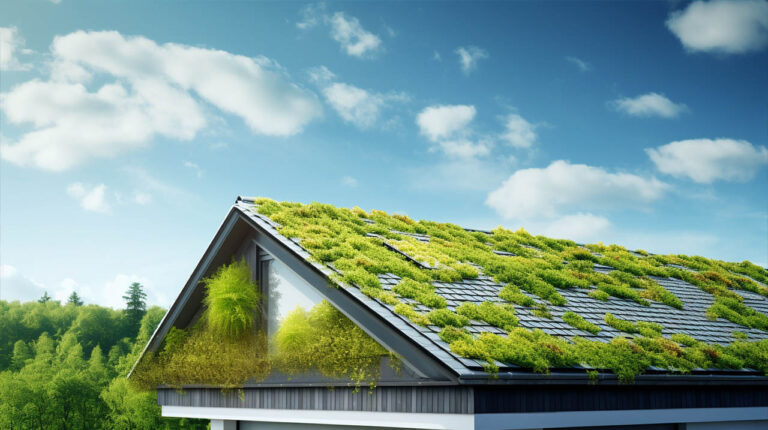Roofing is not just about protection from the elements; it’s also about sustainability, energy efficiency, and environmental responsibility. As homeowners become more conscious of their environmental footprint, the demand for sustainable roofing materials has grown. Here’s a detailed look at various sustainable roofing materials and their benefits.
Environmental Performance Factors
When we talk about sustainable roofing, we’re not just referring to the raw materials used. The sustainability of a roofing material encompasses its entire lifecycle, from sourcing and manufacturing to performance and disposal. Key factors include its durability, resistance to heat gain, and how it’s disposed of once its life ends. For instance, materials certified by the Energy Star program have high heat reflectivity, which means they can reflect heat away from the roof, reducing cooling costs.
Metal Roofing: Strength and Longevity
Metal roofs, though energy-intensive to produce, are known for their durability and longevity. Often made from high recycled content, they can be recycled at the end of their lifespan. While metals like steel and aluminum are mined and not technically sustainable, their long lifespan and recyclability make them a popular choice for many homeowners.
Slate Roofing: Elegance and Durability
Slate roofs are synonymous with beauty and durability. However, the process of mining and transporting slate is resource-intensive. Despite its weight and the need for additional roof framing, its incredible durability makes it a sought-after roofing material.
Clay Tile Roofs: Timeless Appeal
Clay tiles, or terra cotta, are known for their durability. Made from natural clay, they are shaped, fired, and sometimes glazed or painted. Given the abundance of clay, many manufacturers consider their products sustainable.
Wood Shakes and Shingles: Nature’s Gift
Wood shakes and shingles stand out as potentially the most sustainable roofing materials, provided they come from sustainably harvested sources. They are biodegradable, making disposal easy. However, their durability is less compared to slate or clay tiles.
Asphalt Shingles: Versatility and Affordability
Asphalt shingles are made from a mix of paper, minerals, fiberglass, tar, and other petroleum products. While they offer good heat reflectivity, they are not biodegradable and, being petroleum-based, are not considered sustainable.
Concrete Tile and Fiber-Cement Roofing: Durability Meets Design
Both these materials are made with Portland cement, which is energy-intensive to produce. Despite this, their extreme durability makes them a favorite among homeowners. Concrete tiles, in particular, are heavy and may require additional roof framing.
Green Roof Systems: Living Roofs
Green roofs are covered partially or completely by vegetation. They offer multiple benefits, including rainwater absorption and insulation. However, they rely on petroleum-based waterproof membranes, which are not sustainable.
Tips for Choosing Sustainable Roofing Materials
- Recycled Content: Opt for materials with a high recycled content.
- Maintenance: Choose materials that are durable and require minimal maintenance.
- Weight and Roof Slope: Ensure your home’s structure can support the weight of the chosen material and that it’s suitable for your roof’s slope.
- Color and Reflectivity: For hot climates, light-colored and highly reflective materials are ideal.
- Warranty: A long warranty often indicates quality and durability.
At TecHero Roofing, we understand the importance of sustainable roofing. Whether you’re looking for roof repair in North Hills or seeking the expertise of North Hills roofers, our team is committed to providing top-notch roofing services in North Hills CA. Sustainability is not just a buzzword for us; it’s a commitment to our clients and the environment.


